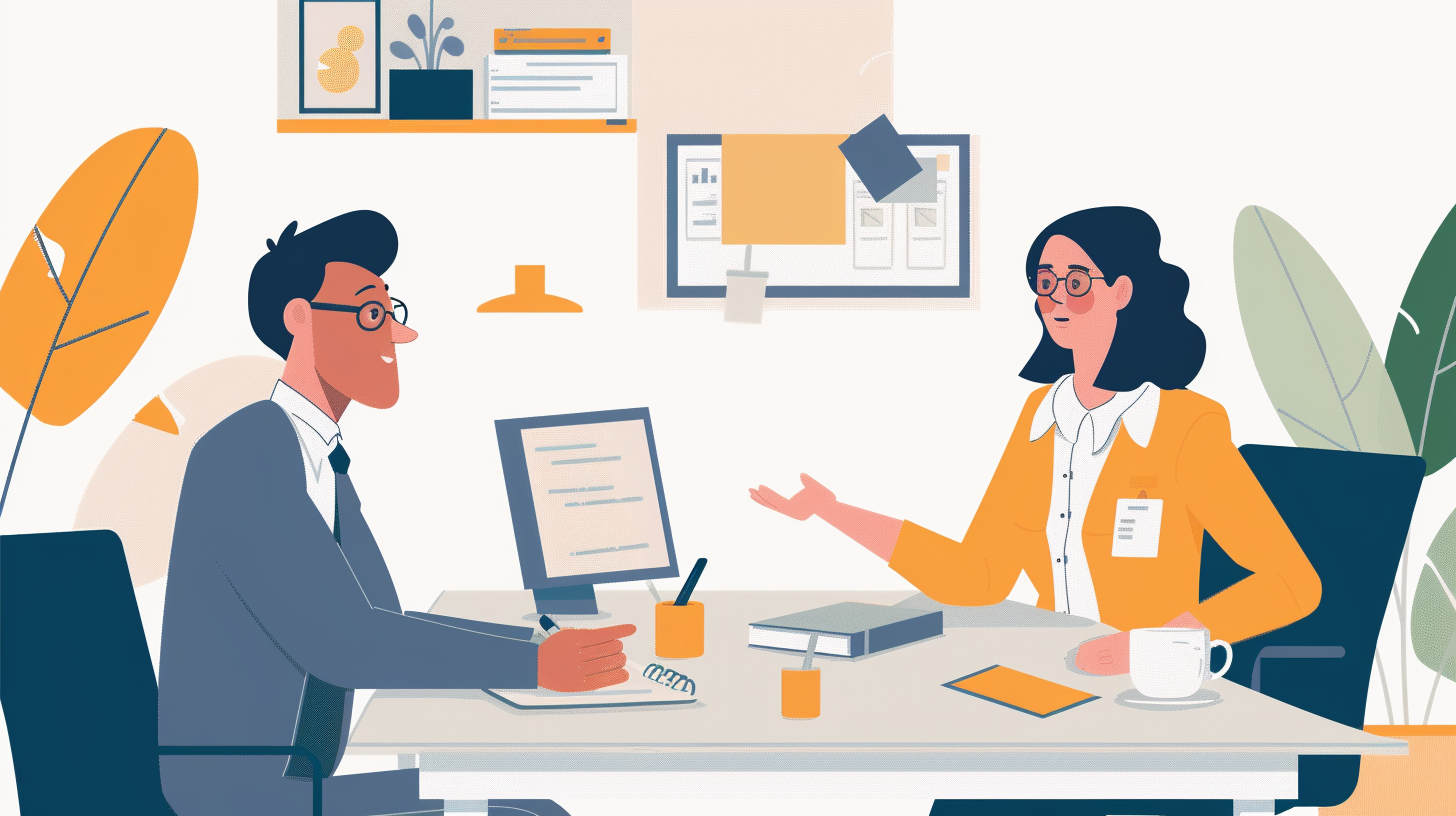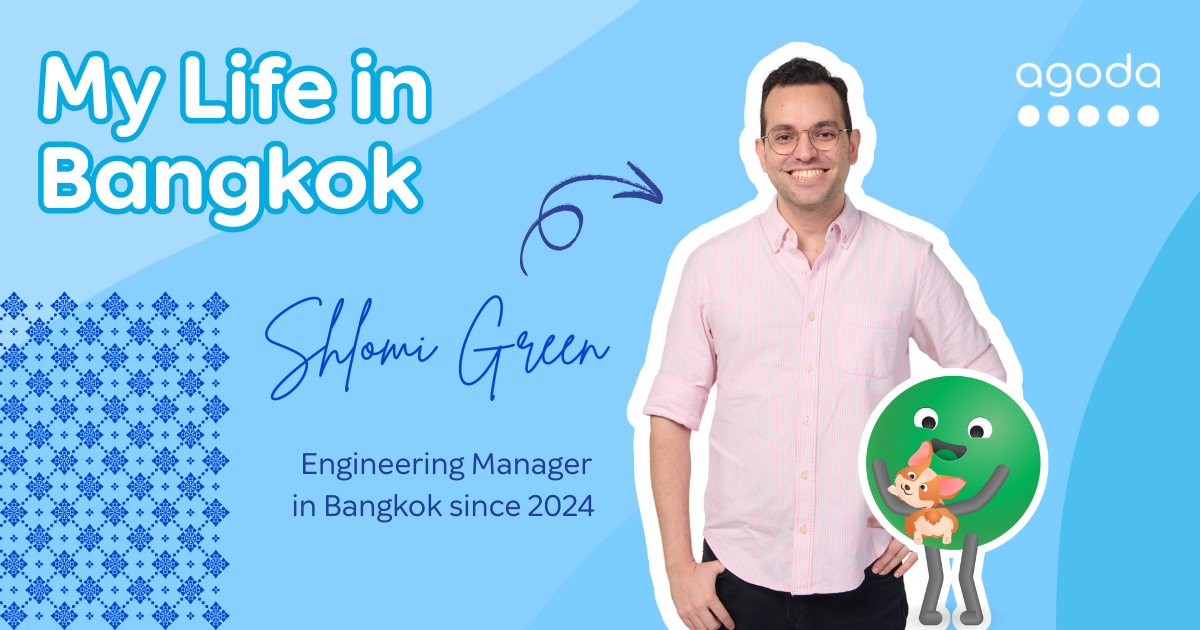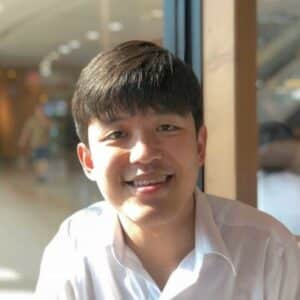At Agoda, we love a challenge, and taking on a new technology is no exception. Welcome to Part Three of our AI in Creativity series, where Jennifer Jones (Global Brand Creative Senior Manager) shares how the Brand Creative team experiments with GenAI to boost creativity, streamline our processes, and do more with the resources we have.
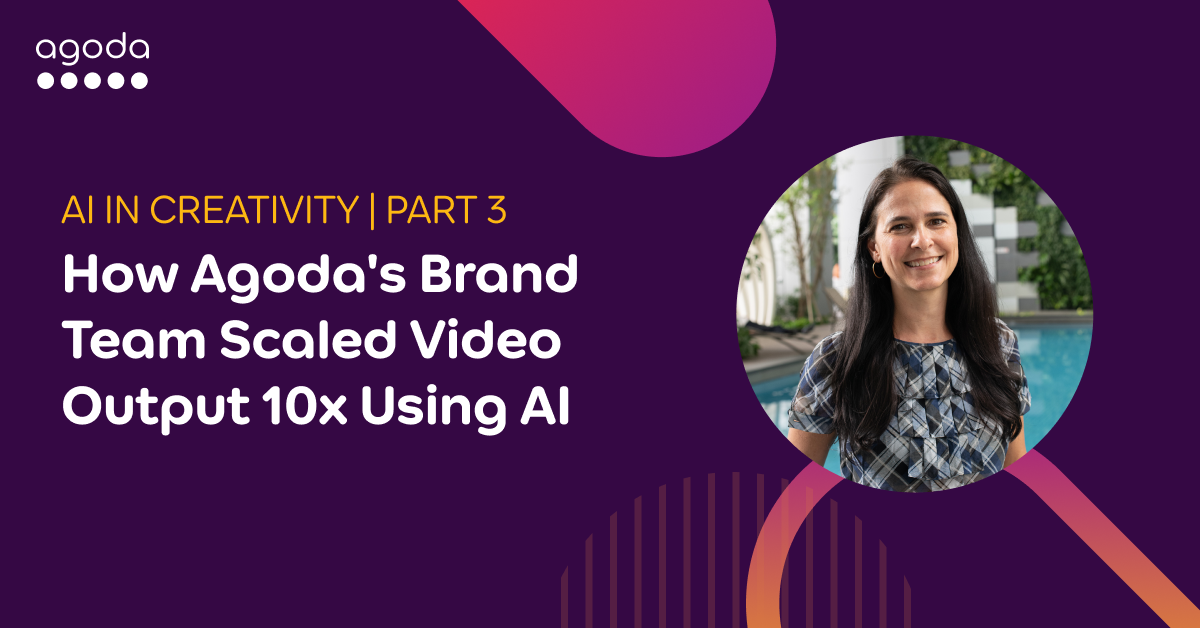
In Part Two of this series, I shared how my team and I started exploring the possibilities of AI, uncovering exciting successes alongside valuable lessons from failure. But experimentation alone wasn’t enough. To unlock the full potential of AI, we needed to make it an essential part of our day-to-day work.
The moment AI stopped being optional
At first, old habits died hard. Despite the success of our initial proof of concept, the team often fell back on the traditional creative tools we were familiar with when creating video content. While AI proved helpful for tasks like ad concepting and voiceovers, we still hadn’t fully integrated it into our workflow. With an OKR demanding 10X more video ads per month, allowing us to deliver more relevant and personalized ad content to consumers, incremental tweaks to our workflow wouldn’t cut it—we needed a radical rethink.
The hackathon that rewrote our playbook
The real shift happened during a hackathon with the whole Brand Creative team. Together, we dedicated a full day to one clear goal: reliably integrating AI to meet our video production targets without sacrificing quality. We weren’t looking for flashy experiments, but practical, repeatable solutions with impact.
Our objectives were as follows:
- Design a systematic process to produce competitive ads at scale.
- Identify which AI tools could handle each production step.
- Prove that AI could lead over 80% of creative production, while keeping every ad unmistakably ‘Agoda-quality’.
- Show that ads could be automatically resized, translated, and reformatted using this approach.
We split into teams and embraced the challenge, each eager to test different solutions. Throughout the day, surprising ideas began taking shape – but they all pointed to the same realization.
One team built a custom GPT to automate script-to-storyboard conversion—slashing a 7-hour task to just 20 minutes. Another team streamlined asset creation time by using AI to automatically convert scripts into tailored image prompts for video visuals.
The big takeaway? No matter the approach, pairing these tools with automation meant we could produce dozens of video versions with far less effort than before. By the end of the day, we’d uncovered a whole new way of working.
How we transformed our video production workflow
The outcome of the hackathon became a blueprint for transforming our entire workflow. Combining AI tools with automation turned video production from a bottleneck into a smooth, scalable system for creating content.
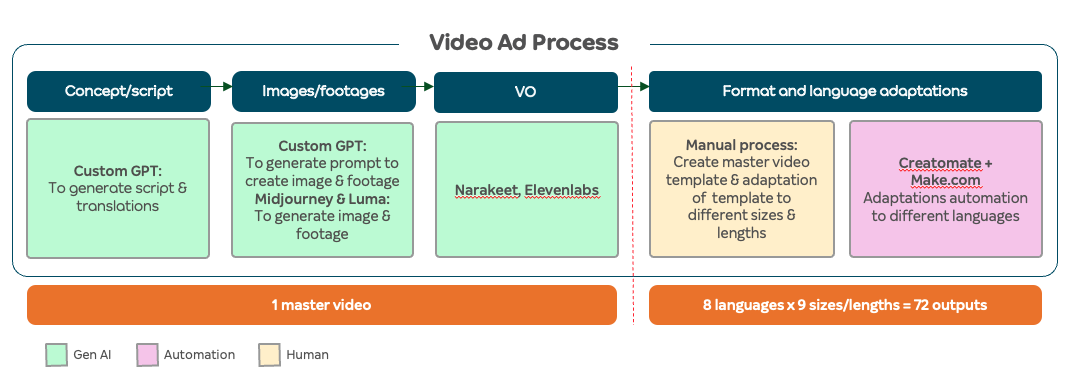
Here’s how it works:
Step 1: Asset creation (60% AI)
Our process begins with AI handling most of the assets needed for the video: generating scripts and visuals, creating voiceovers, and even translating the script into 8 languages.
Step 2: Manual build of video template (20% Craft)
While AI handles much of the heavy lifting, crafting the video’s structure, pacing, transitions – and most importantly, its mood and tone – still requires a human touch and traditional tools.
Step 3: One-to-many expansion (20% Automation)
Using platforms like Make.com, we automate the adaptation of the master video into multiple languages, sizes, and durations, eliminating manual rework.
Output: From 64 to 720 adaptations a month
The results speak for themselves: We scaled from producing 4 master videos per month with 16 adaptations each to 10 master videos with 72 adaptations each. This allowed us to test across more markets, channels, and ad placements than ever before.
We don’t use AI for everything – here’s why
While this AI-powered solution revolutionized our workflow, we apply it strategically, not universally. Each project that crosses our desk is carefully evaluated, and traditional methods still prevail for work that demands complex effects or premium polish. However, for scalable campaigns, this approach has proven invaluable.
The true value of AI goes far beyond efficiency gains. By automating repetitive tasks, we’ve freed up time to focus on what matters most: creative innovation and managing more ambitious campaigns. Beyond faster output, we’ve gained creative bandwidth. Tasks that once took days can now be completed in hours, freeing us to explore innovative approaches that just weren’t feasible before.
Breaking silos and redefining creativity
One of the most unexpected rewards of this journey has been watching our team embrace AI. These tools have become catalysts for collaboration and skill-sharing. Team members who once worked in silos now come together to share knowledge, learn from each other, and push each other to innovate.
This experience has also challenged us to rethink what it means to be creative. Creativity isn’t just about designing visually stunning work. It’s about solving problems in new and boundary-pushing ways. AI has expanded our definition of creativity, showing us what’s possible when technological capability and imagination come together.
Catch up on the AI in Creativity series
Part One: Why Agoda’s Brand Team Chose to Explore AI in Creativity
Part Two: What Agoda’s Brand Team Learned from Their Early AI Experiments
Part Three: How Agoda’s Brand Team Scaled Video Output 10x Using AI (You’re here!)
About the Author
Jennifer Jones is a Global Brand Creative Senior Manager at Agoda.


